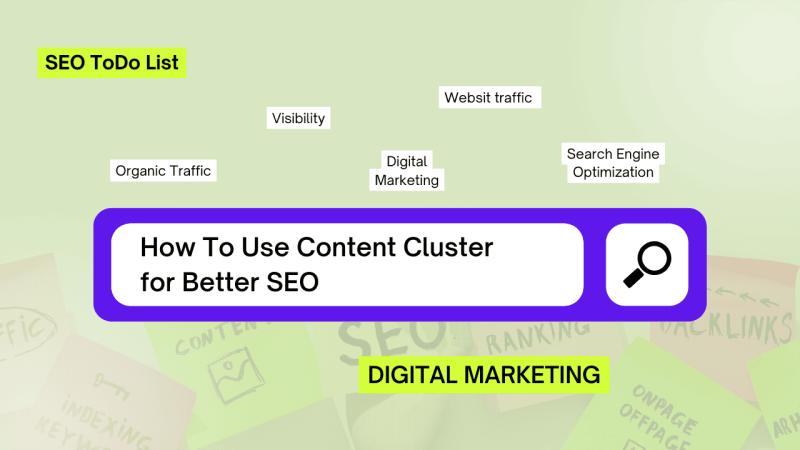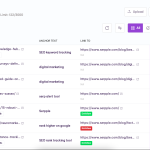Over the last few years, search engines have shifted their focus from individual keywords to broader topics. As a result, SEO has moved toward creating comprehensive content rather than just targeting keyword volume.
Today’s users expect to find all the information they need about a topic on one website so they don’t have to visit multiple pages.
This is where the concept of content clusters (also known as topic clusters) comes in. By grouping related content, you can keep visitors on your site longer and provide them with a more complete resource.
In this post, we’ll explore what content clusters are and how you can create them for your business.
What are Content Clusters?
Content clustering involves organizing related topics around a central theme or “pillar page.” This pillar page acts as the main hub, and each related subtopic or supporting page links back to it.
By creating a pillar page and supporting pages, you help users understand a topic more deeply and signal to Google that your site covers the subject comprehensively. Over time, this can also improve your website’s E-E-A-T (Experience, Expertise, Authority, and Trustworthiness).
Another main goal of content clusters is to improve your site’s architecture and help increase search rankings, making it easier for both users and search engines to find and understand your content.
Is it necessary that you should create content cluster every time?
The short answer is that it depends on your topic. If one piece of content can thoroughly cover all aspects of a subject, then you don’t need a cluster.
However, if multiple subtopics or areas warrant separate, more detailed content, creating clusters can help organize that information and improve your site structure. The key is to focus on what best serves your readers while maintaining clarity and depth.
When Should You Use Content Clusters?
You can use content clusters to organize your content effectively. Of course, there are other ways to structure a website, but clusters are especially useful for sites still building authority. They allow you to target less competitive, more specific keyphrases (long-tail keywords) that can bring in initial traffic before you tackle broader, more competitive terms.
Once your main clusters are established and start attracting visitors through these long-tail keywords, your overall rankings will likely improve. This boost can help you rank for your primary keywords as well since Google will recognize your site as more authoritative. In addition, using content clusters makes it easier for Google to understand your website’s hierarchy and see how each piece of content is connected.
If your main topic is “link building,” your pillar page would cover the core concepts, such as why link building matters and an overview of various strategies. The cluster pages would then dive deeper into each subtopic, for example:
- Link Building Strategies
- How to Measure Link Strength
- Link Building Management
- Link-Worthy Content Types
- Internal link-building strategies
Since all these topics relate directly to link building, it makes sense to link them together and back to your main pillar page. This helps users (and search engines) see how your content is organized and why you’re an authority on the subject.
The Importance of Creating Content Clusters
Link building is vital for SEO because it strengthens your site’s authority, boosts your search rankings, and helps users discover relevant content. Here are a few reasons why it’s so important:
Enhances Website Authority
Earning links from reputable sources signals to search engines that your content is reliable and valuable. This trust factor can help improve your overall rankings for various related keywords.Improves Site Architecture and User Experience
Thoughtfully placed internal links guide visitors to related topics on your site, while inbound links from other websites help users discover your content. A clear linking strategy makes it easier for both users and search engines to navigate and understand your website.Drives Referral Traffic
High-quality external links can send targeted visitors directly to your site, potentially increasing conversions and brand visibility. This referral traffic can be especially valuable if it comes from trusted websites in your industry.Increases Page Relevance
Links that include relevant anchor text help search engines better understand the context and focus of your content. This can lead to improved rankings for specific search queries related to the linked pages.
Ultimately, a solid link-building strategy can elevate your site’s authority, improve user experience, and strengthen your presence in search results.
How to Create Content Clusters
If you’re considering using content clusters on your website, the first step is to identify your pillar pages. These pages cover the broad topics that represent your expertise. For example, if you focus on SEO, your pillar pages might include:
- Keyword research
- SEO copywriting
- Technical SEO
- E-commerce SEO
- Site structure
Take time to choose these key areas wisely because they will shape your site’s overall structure and guide the creation of your supporting content.
Let’s take a look at every topic one by one: –
Keyword Research
The first step in identifying your main topics is to conduct thorough keyword research. This process not only helps you discover the primary keywords for your pillar pages but also provides plenty of ideas for the supporting content in your clusters.
After settling on your pillar pages, choose several long-tail keyphrases and incorporate them into each pillar. This way, you can attract a more targeted audience and cover the topic in greater depth.
You can use Serpple’s Keyword Suggestion tool to do your keyword research.
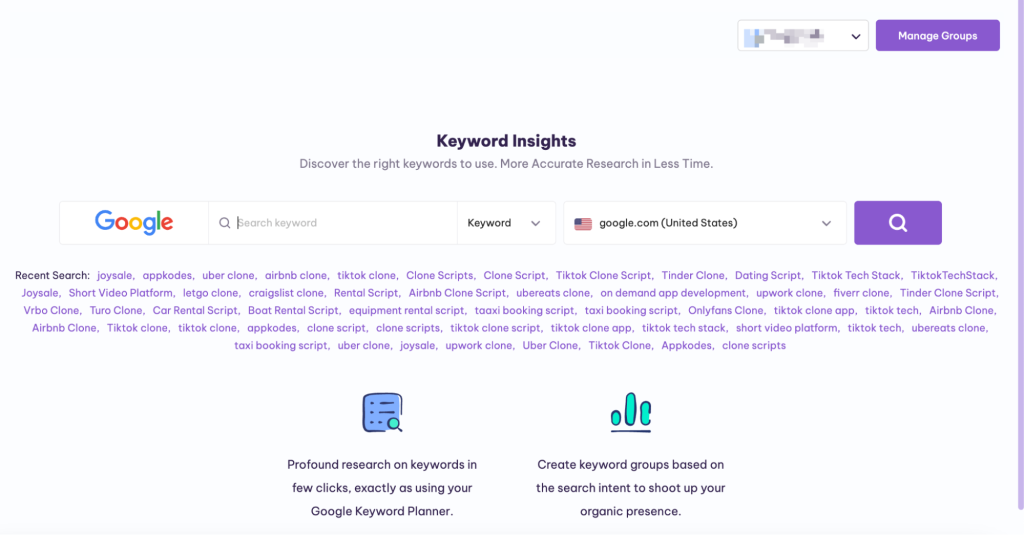
For example, if we search for the keyword “content clusters” we get some of these long-tail & low difficulty keywords.
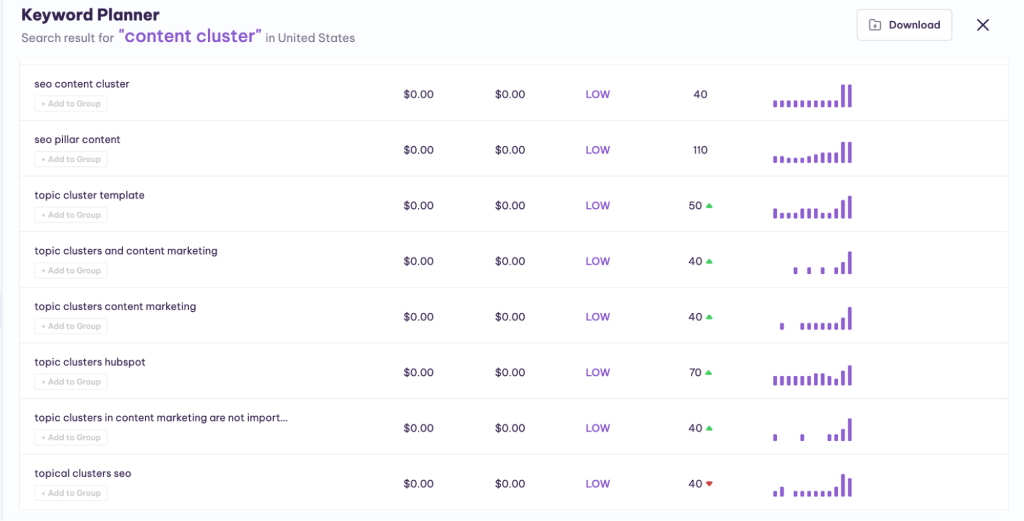
You can create a group where you can keep all the keywords for different clusters for a topic.
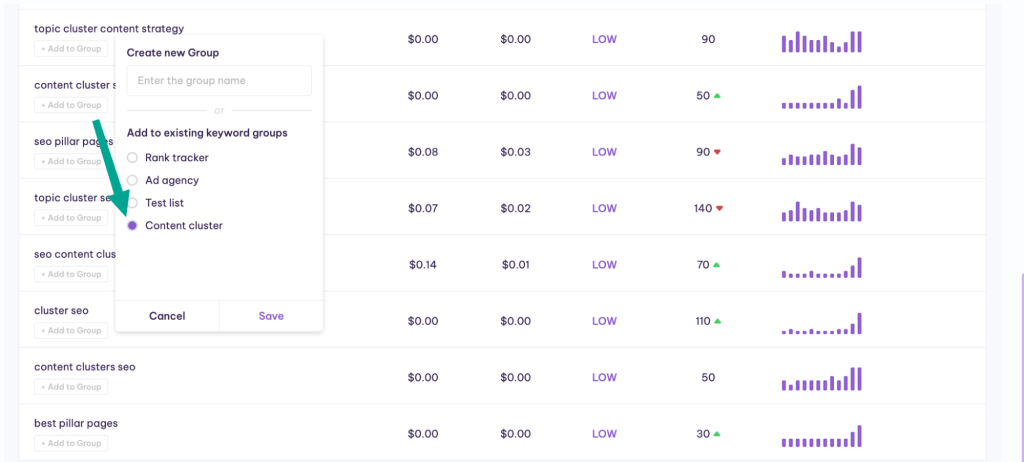
Build Better Layout of Your Pages
An optional but valuable step is to involve a UX designer or design professional once you know how your pillar pages and supporting pages will be structured. One key decision is whether your pillar pages should provide a quick overview of all subtopics or include substantial content right away. We recommend including enough meaningful information for them to rank for your primary keywords, but how much you choose to include depends on your strategy.
Beyond that, aim for a layout that is clear and easy to navigate, both for visitors and search engines. Clear navigation, well-organized headings, and relevant internal links help keep users on your site and demonstrate to Google that your content is structured effectively. Ultimately, focusing on an accessible user experience often leads to better long-term SEO results.
Content Building
Once you’ve decided on the structure of your content clusters, the real work begins: writing and organizing your material. Here are a few practical steps to make your content-building process more effective:
Start with Your Pillar Pages
Focus on the core topics that define your business or area of expertise. These pillar pages should include a broad overview and essential information, serving as the foundation for all related content.Outline Your Supporting Content
Create separate articles or pages that expand on the subtopics linked to each pillar. Use your keyword research and audience insights to decide which areas need deeper coverage. Prioritize the subtopics that are most relevant to your goals or that answer the most common questions in your field.Maintain Quality and Consistency
Keep your writing clear, engaging, and consistent in style. If multiple people are creating content, consider using a style guide to ensure everything matches your brand’s voice and tone. Also, if your content sounds vague, consider using an online rephraser that improves clarity and readability.Think About Internal Linking
Connect your supporting pieces to the relevant pillar pages and to each other when it makes sense. This reinforces the logical flow of your content, helps users navigate, and signals to search engines how your pages relate.Plan for Continuous Updates
Remember that content clusters aren’t a one-time project. As your industry evolves or your business grows, revisit your pages to add new insights, data, or examples. Keeping your content up-to-date also signals to users and search engines that you’re active and reliable.Celebrate Your Progress
Even though content clusters will evolve, there will be a moment when you can take stock of what you’ve built. At that point, you’ll see how much value you’re offering your audience and how your expertise shines through your work.
Building Good Internal Linking Structure for Better Crawling & User
A solid internal linking structure ensures that both users and search engine crawlers can easily navigate your website. While the guidelines above provide a strong foundation, here are additional ways to give more depth to your strategy:
Use Descriptive Anchor Text
Instead of generic phrases like “click here,” use anchor text that indicates what the linked page is about. This helps users understand where they’re heading and provides search engines with better context.Highlight Important Pages
Identify the pages most crucial to your business goals—your pillar pages and other high-value content. Make them easier to find by placing links in prominent locations (like navigation menus or homepage sections). This helps direct both users and crawlers to the pages that matter most.Avoid Orphan Pages
Every piece of content you publish should be linked to at least one other page on your site. “Orphan pages”—those with no internal links—are difficult for crawlers to find and for users to stumble upon, which means they’re unlikely to rank well or drive traffic. To check orphan pages on your website, you can use free tool like Screamingfrog, we have written a brief guide on it, do check it out!Maintain a Logical Hierarchy
Your site’s structure should flow from broad topics (pillar pages) down to more specific subtopics or supporting articles. Keep the structure intuitive, so users and crawlers understand how each page fits into your overall content.Limit Excessive Linking
While internal links are helpful, avoid adding too many on a single page. Links should serve a purpose: guiding users to relevant content, clarifying relationships between pages, or highlighting important pages in your cluster.Review & Update Regularly
As you add new content or retire old pages, revisit your internal links. Updating links to reflect your current site structure ensures that users and crawlers can always find the best, most relevant content. With updating links, you get the opportunity to repurpose your content for other platforms too.Keep User Paths in Mind
Think about the journey you want visitors to take through your site. If certain pages naturally connect, link them. This organic approach not only improves user experience but also helps search engines understand how your content fits together.
Conclusion
We hope this post has shed light on the idea of content clusters—what they are, how they can benefit your website’s SEO, and whether they might be a good fit for you. The key takeaway is to structure your content in a way that serves your visitors, helping them find everything they need in one place. By organising related topics around pillar pages, you can create a stronger site structure, enhance user experience, and ultimately boost your search engine visibility.
Published by
Adam White
Adam White is a 20+ year SEO professional who has optimized over 400 websites, built and sold over 20 internet and SaaS businesses all with SEO as the main traffic source. Follow him on Twitter/X
All stories by Adam White
